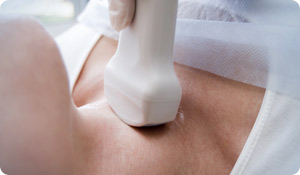
See what people are saying about this article on our Facebook page!![]()
Whenever you find a lump or bump that shouldn't be there, it's natural to feel worried. Sometimes a lump is a sign of something serious such as cancer. More often, however, it's nothing more than a simple sebaceous cyst. While a sebaceous cyst might not be pretty, it's usually not a cause for concern.
Sebaceous cysts are actually misnamed. The correct name for the small bumps that develop just under the skin on your face, neck, scalp, breast, back, abdomen and genital area is epidermoid cyst. An epidermoid cyst grows slowly, is generally not painful, and isn't cancer. Unless it grows so large that it disrupts normal body function, it isn't even dangerous. The biggest concerns associated with these epidermoid cysts are usually cosmetic.
Epidermoid cysts form in the skin's surface layer, which is covered with hair follicles, oil glands, dirt, and dead skin cells. Cysts form when an oil duct or hair follicle is damaged or plugged or when dead skin cells build up and block drainage of normal secretions. Then, keratin and sebum, which are normal oily, waxy secretions, drain into the cyst instead of out to the skin's surface. This buildup eventually forms a cyst.
Epidermoid cysts are common. Men get them more often than women, and people who spend a lot of time in the sun develop them more often than shade-dwellers. They can also develop from long-term use of oil-based cosmetics and lotions that block pores and sweat glands.
How do you know it's an epidermoid or sebaceous cyst and not something more serious? Your doctor should examine any unusual lumps, but epidermoid/sebaceous cysts are easy to recognize:
- They're round bumps that are easy to move with your fingers.
- When located right under the skin, they usually appear white or yellow.
- When located deeper under the skin, they don't change skin color or appearance.
- Their size ranges from less than 1/4 inch to 2 inches in diameter
Doctors rarely need to biopsy or treat sebaceous/epidermoid cysts unless they:
- Become infected (red, hot, inflamed)
- Grow rapidly
- Rupture (drain blood and pus)
- Become painful
- Occur in a spot that's constantly irritated
- Are particularly large or deep
- Are in the genital area, blocking urination or making sex painful
Doctors may choose to treat infected or inflamed cysts with antibiotics or corticosteroid medications, or they may remove the cyst or decrease its size.
1) Incision and drainage. The doctor makes a tiny incision and then squeezes out the cyst's contents. This is a quick and easy fix, but cysts often reoccur.
2) Total excision. This minor surgical procedure (perfomed with local anasthesia) requires a larger incision to remove the entire cyst followed by closing the wound with sutures (stitches).
3) Minimal excision. A small incision is made, and the cyst's contents are squeezed out. The doctor then removes the cyst wall. Stitches usually aren't necessary.
4) Laser treatments. Cysts that appear on the face or other visible areas are vaporized.
It's not uncommon for patients to develop more than one sebaceous cyst. What's the best way to prevent them?
- Good hygiene, diet, and exercise are always good choices for keeping skin healthy.
- Choose oil-free, non-comedigenic cosmetics and lotions.
- See your dermatologist regularly.
See what people are saying about this article on our Facebook page!![]()
Sources:
Benign Lesions of the Skin
http://www.uptodate.com/contents/overview-of-benign-lesions-of-the-skin?source=preview&anchor=H13&selectedTitle=1~42#H13
Mayo Clinic
Epidermoid/Sebaceous Cysts
http://www.mayoclinic.com/health/sebaceous-cysts/DS00979/METHOD=print





